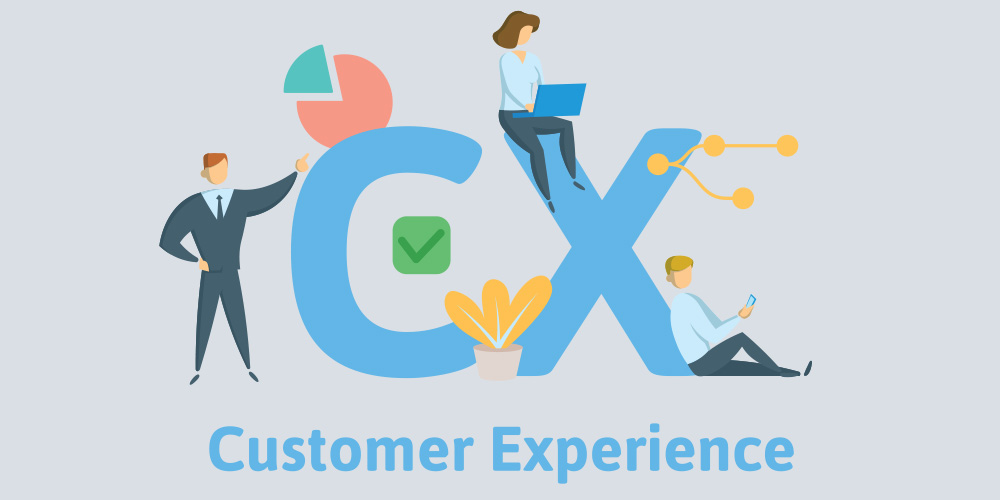
According to a recent survey from SuperOffice, customer experience (CX) is the biggest priority of businesses over the next five years, more important than finding better products or selling them at the right price. Why? Because customers are flocking to brands that provide them with better CX and 86% of consumers said they would pay more for it. Whether you just sell online or have both a website and a bricks and mortar store, improving CX could transform your business. Here are some of the things that customers are looking for from brands today.
Personalisation

What makes Amazon the world’s most successful online retailer? The key ingredient in its success is personalisation. Its collection of user data ensures it knows its customers exceptionally well and this means that whenever they sign into the website, use its app or open an email, every product or offer provided for them is tailored around their wants and needs. It knows their shopping and browsing histories, the things on their wish lists, when they shop, what they shop for and how much they are likely to spend.
This level of insight means that Amazon’s product recommendations are much more likely to be a match for what the customer wants. This not only results in higher sales for Amazon; it also makes it highly attractive to customers who want to find the right products quickly and simply. This is why Amazon has become, for millions of shoppers, the default search engine for products.
The success of Amazon has led personalisation to become commonplace on the internet. Businesses everywhere are collecting user data to provide similar customer experiences (CX). For small businesses to remain attractive to modern shoppers, they too will need to start collecting user data to make personalised recommendations to customers. Today, it is easier than ever to implement. There are numerous specialist companies offering recommendation engines as a service and if that is out of your budget, try the AI-enabled, PRZ Recommendation Engine plugin for WordPress and WooCommerce.
Simple shopping

While product recommendation engines are beneficial, they can’t predict everything that a shopper wants to buy and they are not much use at all for new visitors for whom you have no historical data. Customers in these situations seek websites that offer simpler ways to shop. They want to be able to find products quickly, have all the essential product data given clearly (description, images, price, specifications, etc.) without ‘information overload’ and they want to be able to pay and leave without a fuss.
This starts with simple site navigation and the ability to search for products. Product search has evolved and customers expect to be able to easily narrow down searches by applying numerous filters: price, customer ratings, size, shape, colour, brand, etc. This can easily be implemented using plugins, indeed many store building platforms come with the functionality built-in.
Providing the right information can be a balancing act. Customers will want to know everything essential about a product, including other purchasers’ ratings, but without being overloaded. They may want to compare products side by side before making a decision, save the product in a wish list if they can’t make up their minds and be shown similar products that they might not yet have come across.
Once a decision is made, they’ll want to buy and go as quickly as possible. This means providing a streamlined checkout process, including guest checkouts for non-members and one-click checkouts for those who have saved payment details with you.
Omnichannel shopping

Though the growth in online shopping has led most bricks and mortar stores to build an online store, many retailers keep those two elements of their business distinct. Technology, however, has blurred the lines between online and on-premises shopping and this has provided yet another experience that customers want – omnichannel shopping.
The modern customer likes the flexibility of click and collect. They want to be able to purchase online and pick the product up from the store. Indeed, this business model stopped many bricks and mortar stores going bust during the pandemic as it enabled them to offer drive-through shopping. While shops were compulsorily closed, customers could order items from their phones in the car park and staff would take them to the car.
For single store businesses that have all their inventory under one roof, putting this system into place is easy to do on your website as it just means linking your store software to your inventory data, a feature available in plugins like WooCommerce. It is more complicated for businesses with multiple stores and separate warehouses as they will need to unify inventory data from across all their stores and warehouses. However, once in place, a customer can remotely buy from a physical store using the website or app.
Omnichannel communications

Modern technology has hugely expanded the number of ways that customers and companies communicate. The difficulty for brands is that consumers have their own preferences for how they like to stay in touch. Indeed, they have different preferences for different purposes. If communication is important, they may want the company to send a printed letter or email, if it’s a special offer they may prefer an SMS or WhatsApp message. When consumers want to get in touch, they usually want a quick response and may use phone, chatbot or, increasingly, a voice assistant or smart speaker.
Providing a great customer experience (CX) means communicating via the channels that consumers prefer. The advantage for businesses is that it enables them to send the right messages at the right time with a greater chance that they will be seen and acted upon.
The challenge here is, again, one of data. Not only does the company need to know which channel each customer prefers but it also needs to unify data to provide a complete overview of the customer journey. This way, whoever is communicating with the customer (human or AI) will have access to all the information needed to send out the right correspondence or deal with enquiries seamlessly when customers move from one channel to another.
This is the level of sophistication that many businesses have managed to achieve and which customers now expect from retailers. If they send a message on social media and phone up later, they’ll expect whoever is answering the call to have access to the social media message. Just as importantly, if they have used a smartphone app to add a product to their shopping cart, they’ll expect to see it still there if they visit your website on a laptop or try to order it using a voice assistant. Everything has to link up.
Conclusion
As you can see, customer experience (CX) is essential to staying relevant in an ever more competitive market and this is forcing brands to adopt new business models and the advanced technologies needed to implement them. For websites, the collection of data needed for personalisation, omnichannel shopping and omnichannel communications often require much more disk space and processing power than shared hosting packages provide. Upgrading to VPS or the cloud provides far more capacity to deploy the new technologies that CX relies on and is your first step to transforming your site.













